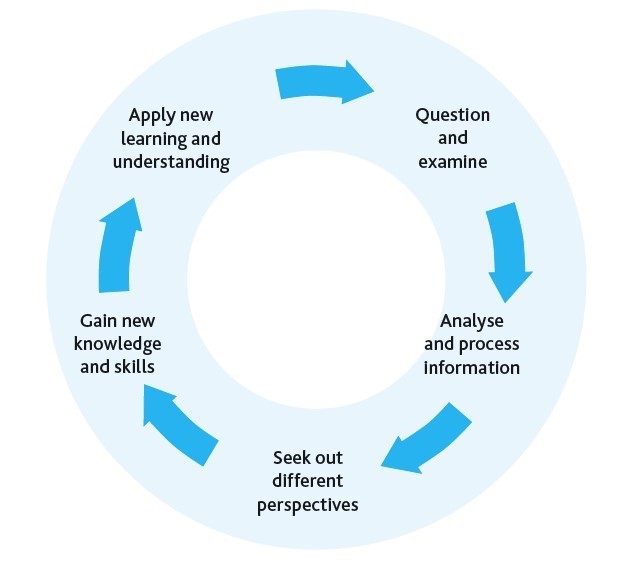The evidence for the portfolio will be gathered over time by the learner and it will be in the form of digital documents, such as, for example: reflective diaries, essays, blogs, opinion pieces; photographs, drawing and animations, video or audio recordings of focus group discussions. These artefacts will be assessed against agreed criteria and the results added to the learner profile.
Critical Thinking is about judging the value or usefulness of evidence, and understanding how sound arguments are constructed. Throughout their time in education students will encounter many occasions that will require them to weigh evidence and exercise judgement, just as in the world beyond school. In many areas of learning the facts are not clear cut or uncontroversial and there are often competing claims to be considered and issues to be debated.
A student’s own thinking about a topic can make a valuable contribution to their critical thinking – for example, when constructing an argument – but an individual’s thinking, or their arguments, must always be backed-up by evidence. This question paper from Cambridge Examinations for a qualification in Thinking Skills, provides a good example of the evidence-based arguments that a learner would need to maintain, to demonstrate their competence as a critical thinker.
Critical Thinking is about judging the value or usefulness of evidence, and understanding how sound arguments are constructed. Throughout their time in education students will encounter many occasions that will require them to weigh evidence and exercise judgement, just as in the world beyond school. In many areas of learning the facts are not clear cut or uncontroversial and there are often competing claims to be considered and issues to be debated.
A student’s own thinking about a topic can make a valuable contribution to their critical thinking – for example, when constructing an argument – but an individual’s thinking, or their arguments, must always be backed-up by evidence. This question paper from Cambridge Examinations for a qualification in Thinking Skills, provides a good example of the evidence-based arguments that a learner would need to maintain, to demonstrate their competence as a critical thinker.

In the paper inserted here, ‘Living Discourse’, the author challenges the promises and hopes around educational technology? Ask learners to question whether or not they agree with her?
What is the counter-arguments? Can the students develop their own defensible point of view?
Ask students to construct an essay, and accompany it with a short presentation, that summarises the arguments.
Another way in which critical thinking could be exemplified is through students hosting a debate on Zoom, that involves speakers for and against a motion – for example, about the importance of EdTech for education.

